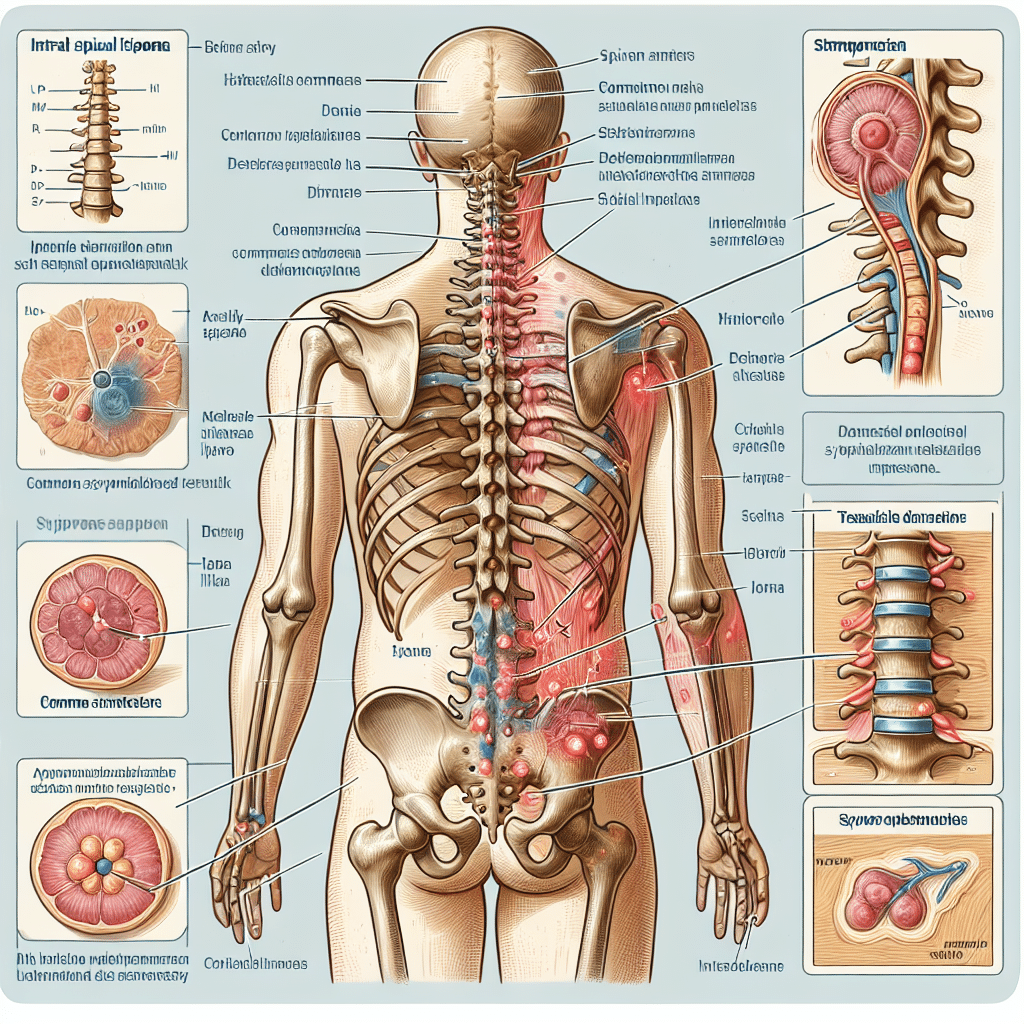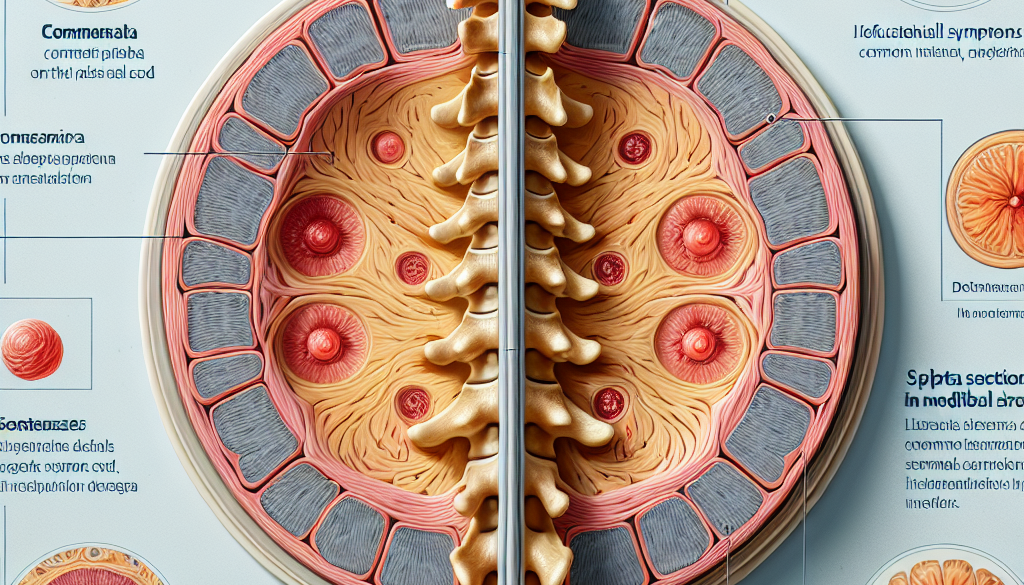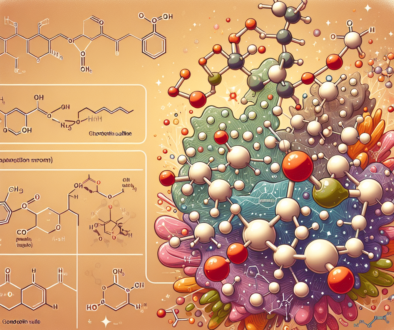Intraspinal Liposma: Symptoms and Treatments
-
Table of Contents
- Intraspinal Lipoma: Understanding Symptoms and Exploring Treatments
- Symptoms of Intraspinal Lipoma
- Diagnosis of Intraspinal Lipoma
- Treatments for Intraspinal Lipoma
- Observation and Monitoring
- Surgical Intervention
- Postoperative Care and Rehabilitation
- Case Studies and Statistics
- Conclusion
- ETChem’s Protein Products for Recovery and Health
Intraspinal Lipoma: Understanding Symptoms and Exploring Treatments

Intraspinal lipomas are rare, benign tumors composed of mature adipose (fat) tissue that occur within the spinal canal. These growths can lead to a variety of neurological symptoms and complications due to their location and potential to compress the spinal cord or nerve roots. Understanding the symptoms and available treatments for intraspinal lipomas is crucial for patients and healthcare providers to manage this condition effectively.
Symptoms of Intraspinal Lipoma
The symptoms of intraspinal lipoma can vary widely depending on the size and location of the tumor within the spinal canal. Common symptoms include:
- Back pain or discomfort
- Numbness or tingling in the extremities
- Muscle weakness or paralysis
- Difficulty with bladder or bowel control
- Abnormal curvature of the spine (scoliosis)
It is important to note that some individuals with intraspinal lipomas may not experience any symptoms, especially if the lipoma is small. However, as the tumor grows, it can exert pressure on the spinal cord or nerve roots, leading to the development of neurological symptoms.
Diagnosis of Intraspinal Lipoma
Diagnosing an intraspinal lipoma typically involves a combination of medical history, physical examination, and imaging studies. Magnetic resonance imaging (MRI) is the gold standard for visualizing soft tissue structures like lipomas within the spinal canal. MRI can provide detailed information about the size, location, and effect of the lipoma on surrounding structures.
Treatments for Intraspinal Lipoma
The treatment approach for intraspinal lipoma depends on several factors, including the size and location of the tumor, the severity of symptoms, and the patient’s overall health. Treatment options include:
Observation and Monitoring
For small lipomas that do not cause symptoms, a conservative approach involving regular monitoring with MRI scans may be recommended. This strategy allows healthcare providers to track any changes in the size or behavior of the lipoma over time.
Surgical Intervention
When an intraspinal lipoma causes significant symptoms or neurological deficits, surgery may be necessary to remove the tumor and alleviate pressure on the spinal cord or nerve roots. The goal of surgery is to decompress the affected area and restore normal function as much as possible. However, complete removal of the lipoma may not always be possible due to the risk of damaging critical neural structures.
Postoperative Care and Rehabilitation
After surgery, patients may require a period of rehabilitation to recover strength and mobility. Physical therapy can help improve muscle function and coordination, while occupational therapy can assist with daily living activities.
Case Studies and Statistics
Case studies of intraspinal lipoma provide valuable insights into the clinical presentation, treatment outcomes, and long-term prognosis of this condition. For example, a study published in the journal Spine reported successful surgical outcomes in a series of patients with intraspinal lipomas, with most patients experiencing improvement in neurological function postoperatively.
Statistics on intraspinal lipoma are limited due to its rarity. However, research suggests that these tumors are more commonly diagnosed in children and young adults, and they may be associated with congenital conditions such as spina bifida.
Conclusion
Intraspinal lipomas are rare tumors that can cause a range of neurological symptoms due to their location within the spinal canal. Diagnosis typically involves MRI imaging, and treatment options range from conservative monitoring to surgical intervention. Understanding the symptoms and treatment strategies for intraspinal lipoma is essential for managing this condition and improving patient outcomes.
ETChem’s Protein Products for Recovery and Health
For patients recovering from intraspinal lipoma surgery or those seeking to maintain spinal health, protein plays a vital role in tissue repair and muscle strength. ETChem’s high-quality protein products, including various types of collagen, can support recovery and overall well-being. Their range of collagen products is suitable for incorporation into dietary supplements and health foods, providing a convenient and effective way to meet protein needs during the healing process.
About ETChem:
ETChem, a reputable Chinese Collagen factory manufacturer and supplier, is renowned for producing, stocking, exporting, and delivering the highest quality collagens. They include marine collagen, fish collagen, bovine collagen, chicken collagen, type I collagen, type II collagen and type III collagen etc. Their offerings, characterized by a neutral taste, instant solubility attributes, cater to a diverse range of industries. They serve nutraceutical, pharmaceutical, cosmeceutical, veterinary, as well as food and beverage finished product distributors, traders, and manufacturers across Europe, USA, Canada, Australia, Thailand, Japan, Korea, Brazil, and Chile, among others.
ETChem specialization includes exporting and delivering tailor-made collagen powder and finished collagen nutritional supplements. Their extensive product range covers sectors like Food and Beverage, Sports Nutrition, Weight Management, Dietary Supplements, Health and Wellness Products, ensuring comprehensive solutions to meet all your protein needs.
As a trusted company by leading global food and beverage brands and Fortune 500 companies, ETChem reinforces China’s reputation in the global arena. For more information or to sample their products, please contact them and email karen(at)et-chem.com today.




